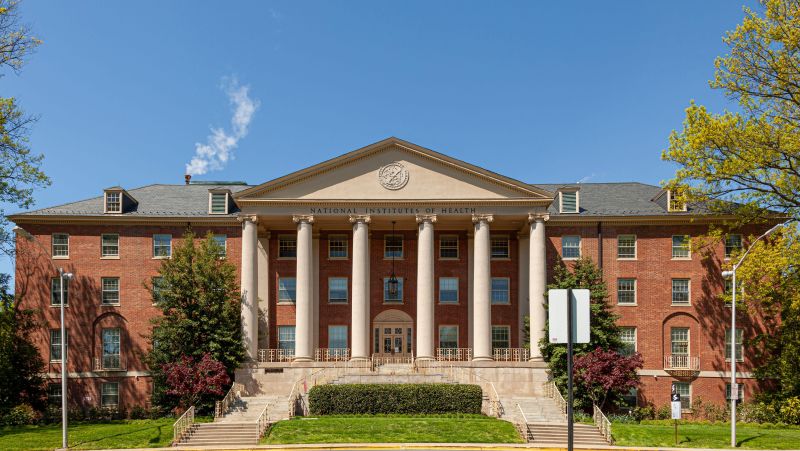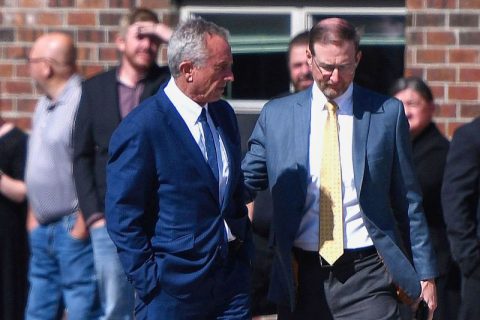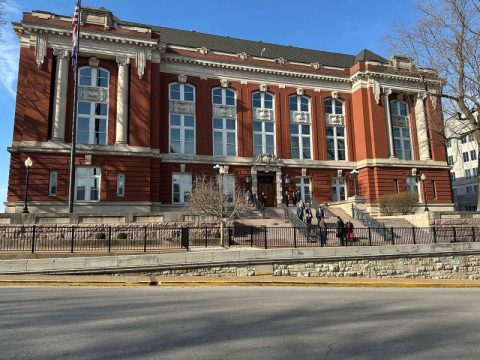The US National Institutes of Health is lowering the maximum “indirect cost rate” that research institutions can charge the government, the agency said late Friday – a move that scientists said could be devastating for the nation’s position as a research leader.
The average NIH grant to an institution has typically had about 30% earmarked for infrastructure costs such as facilities, maintenance and security; some institutions charged up to 60% or more. The new NIH policy will cap that indirect cost rate at 15%, effective immediately.
“NIH spent more than $35 Billion in Fiscal Year 2023 on almost 50,000 competitive grants to more than 300,000 researchers at more than 2,500 universities, medical schools, and other research institutions,” the agency said in its announcement. “Of this funding, approximately $26 billion went to direct costs for research, while $9 billion was allocated to overhead through NIH’s indirect cost rate.”
The agency said the move would more closely align government-funded indirect costs with the rates paid by private foundations. The Gates Foundation, for example, pays a 10% rate for indirect costs, while the Carnegie Corporation and John Templeton Foundation each pay 15% of indirect costs for research.
But researchers said the new policy would kneecap the nation’s status as a global leader.
“Research is not just about having the scientists and lab equipment. It’s about ensuring that the institution has a support system in place,” Dr. Harlan Krumholz, the Harold H. Hines Jr. Professor of Medicine at the Yale School of Medicine, said in a video on the Inside Medicine newsletter. “Without these overhead expenses being covered, research institutions will struggle to maintain the very research infrastructure that enables groundbreaking medical advances.”
Institutions will have to absorb these costs themselves, Krumholz said, or cut back on their work. “There’s certainly opportunities to streamline operations, reduce unnecessary overhead, make research funding more transparent and effective, but cutting the indirect rate so abruptly, so drastically, without sufficient safeguards, will threaten the foundational infrastructure that supports our research capacity.”
Dr. Carl Bergstrom, a biologist at the University of Washington, noted on social media that the new policy “means cutting one of the most important sources of university funding nationwide by 75% or more.”
“For a large university, this creates a sudden and catastrophic shortfall of hundreds of millions of dollars against already budgeted funds,” he said in a post on Bluesky.
Dr. Theodore Iwashyna, a professor of pulmonary and critical care medicine and of health policy and management at Johns Hopkins University, said the move was “a disastrously bad idea.”
“And frankly, this means that the lives of my children and grandchildren – and maybe yours – will be shorter and sicker, because discoveries will not be made. It means the NIH research that has been the backbone of the high-tech health economy will be gutted, reducing their economic opportunities.”
Dr. Ned Sharpless, director of the National Cancer Institute from 2017 to 2022, predicted that universities across the country will move swiftly to challenge the new policy but said he agreed with the NIH that a re-evaluation of indirect costs is needed.
US Sen. Patty Murray, D-Washington, said the abruptly lowered indirect cost rate is illegal under the Labor-HHS-Education Appropriations Bill.
“This funding helps produce breakthroughs that change patients’ lives, prepare us for pandemics and other global health threats, and ensure the U.S. continues to be the global leader in biomedical research,” she said in a statement. “After a global pandemic that brought the world economy to a grinding halt and cost more than one million American lives, it’s unthinkable that [President Donald] Trump and [Elon] Musk want to pull funding that will force public and private labs across America to shutter.”
Trump proposed capping indirect costs in his previous administration, but the effort was unsuccessful. More recently, indirect cost reform was one of the proposals in Project 2025, a sweeping plan to overhaul the government that Trump disavowed during his campaign.






